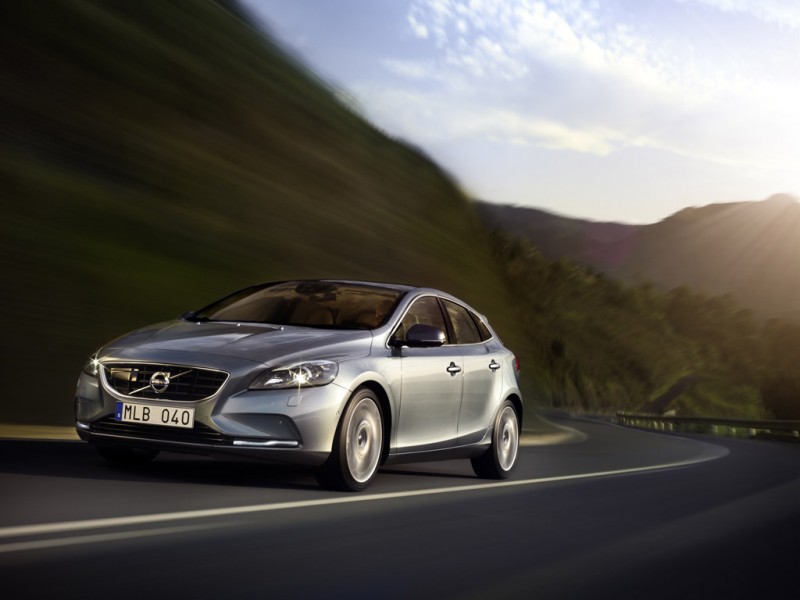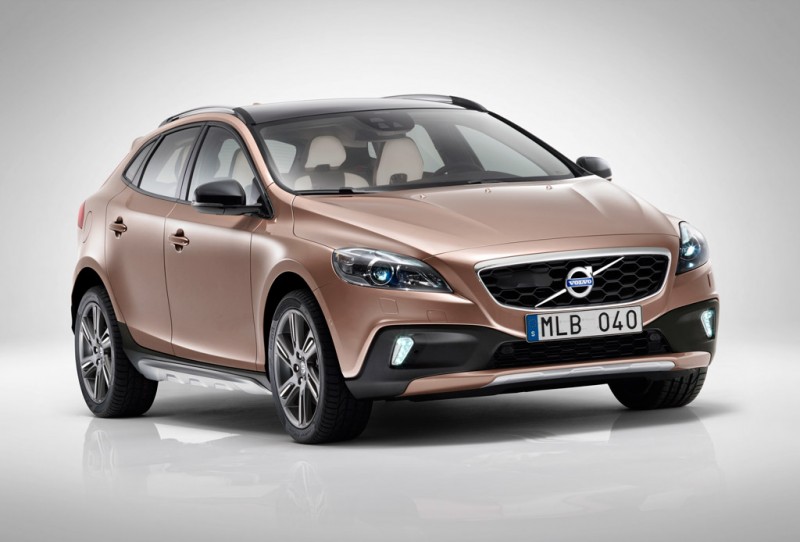Volvo have produced world class cars with respect to safety for many years. This is no small feat for a relatively small manufacturer since every other manufacturer has been trying to knock them off their perch. However, this has never stopped the determined Swedes and now they’ve taken their safe image to a new level, with their advanced Drive-E powertrains. It seems that safety is but one of Volvo’s many talents.
The Drive-E engines are prepared for future electrification from the start. The compact size of the four-cylinder engines means that an electric motor can be fitted in the front or rear of the vehicle. The battery pack will be located in the centre of the car for optimum weight distribution. However, there is no word as to whether this has been implemented for the new V40 Drive-E cars that will be on sale later this year.
Delivering an ample 190 hp yet sub 100 g/km CO2 emissions, the new Volvo V40 and V40 Cross Country offer class leading standards. There will also be more derivatives offering 85 g/km CO2, but for the Netherlands only. UK customers will be able to place their orders for the V40 D4 manual from June.
“The Volvo V40 D4 offers a massive 80 hp more driving pleasure than others cars in the segment with CO2 emissions at that level. This is yet more proof that the Drive-E powertrains take efficient driving pleasure to a new dimension.”
says Michael Fleiss, Vice President Powertrain at Volvo Car Group.
Initially, the V40 can be equipped with two engines from the four-cylinder Drive-E engine family: the 245 hp petrol turbo T5 and the turbo diesel D4 with 190 hp. An 8-speed automatic gearbox contributes to the refined drive.
Outstanding mix
“Their outstanding take-off and responsiveness, combined with a smooth engine sound, will make the nimble V40 cars even more fun to drive, without compromising on modern customers’ demand for superb fuel economy and minimised CO2-emissions.”
adds Michael Fleiss.
To deliver the desired responsive, smooth and fuel-efficient drivability, the Drive-E engines are teamed either with Volvo Cars’ new eight-speed automatic gearbox or an enhanced six-speed manual tuned for improved fuel economy. Versions with the automatic gearbox can also be specified with paddles on the steering wheel for manual gear shifting.
Diesel with ground-breaking i-Art technology
The D4 turbo diesel comes with 190 hp and 400 Nm of torque. The engine features world-first i-ART technology with pressure feedback from each fuel injector instead of using a traditional single pressure sensor in the common rail.
Each injector has an intelligent chip on top of it that monitors injection pressure. Using this information, the self-adapting i-ART system makes sure that the ideal amount of fuel is injected during each combustion cycle.
“The combination of injection pressure at 2,500 bar and i-ART technology gives the customer an engine with high performance, improved fuel economy and considerably lower emissions.”
says Michael Fleiss.
The diesel also features refinements such as a state-of-the-art twin-turbo, reduced friction and a smart valve solution on the cooling system for a more rapid heat-up phase after a cold start.
V40 D4 with fuel consumption at 74.3 mpg for UK market
UK customers can now enjoy the new D4 engine in the V40 hatchback. Fuel consumption for the manual version is 74.3 mpg (EU Combined), which corresponds to CO2 emissions at 99 g/km. The figure for the V40 Cross Country is 70.6 mpg (104 g/km) with the manual gearbox.
The four-cylinder petrol turbo T5 has 245 hp and 350 Nm of torque. Fuel consumption in a Volvo V40 with the 8-speed automatic is 54.3mpg (136g/km). All figures are preliminary.
Introduced in 2013
The first two-litre, four-cylinder Drive-E engines (called Volvo Engine Architecture [VEA] during the development phase) were launched in autumn 2013. From May 2014, all new Volvo models, except the XC90, will be available with engines from the new powertrain family.
Source; Volvo


